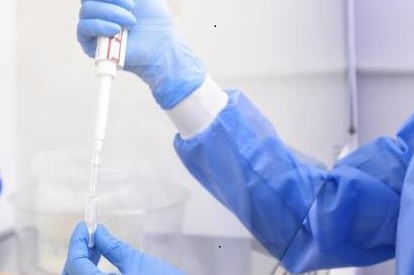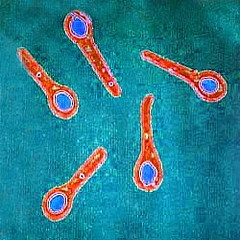Medical Bacteriologyis a branch of medical microbiology that is concerned with the diagnosis, prevention and treatment of infectious diseases caused by bacterial pathogens. It is simply the study of bacteria that are of medical importance i.e. that cause diseases in human beings and animals. Medical bacteriology is the study of the interactions between pathogenic bacteria and the human body as well as that of other animals and mammals that culminate in the development of infectious diseases in them. It also encompasses the pathogenicity, virulence and laboratory detection as well as the control and the prevention of the diseases caused by the pathogenic bacteria. As will be seen later, there are plethora of bacteria that cause different diseases and infections in humans. Bacteriology is simply the study of bacteria (inclusive of pathogenic and non-pathogenic bacteria). The field bacteriology encompasses the identification, classification, and characterization of bacterial species that are of health and economic importance; and microbiologists that specialize in the study of bacteria are generally known as bacteriologist.
Bacteria are single-celled prokaryotic microorganisms. They are ubiquitous in nature and are overly present in air, soil, plants, water and on most solid materials. Bacteria are also present in the body of other living organisms including animals and humans as normal microflora. Few bacteria occur as pathogens of man, plants and animals while a vast majority of them is exploited for the production of goods and services important to man and his environment. Under the microscope, bacteria appear in various shapes. Some are spherical and are known as cocci. Rod-shaped bacteria are called bacilli while those that are spirally-shaped are known as Vibrio. Bacteria can also be classified based on their cluster formation on solid culture media. Two cocci bacterial cells that are paired are known as diplococci while those that are clustered together are known as Staphylococci. Streptococci are bacterial cells that are arranged in chains
Microbiologists study bacteria as well as other microorganisms in order to gain basic understanding about their physiology, reproduction and metabolic activities so that they can understand the diseases they cause and develop practicable ways to control them, thereby preventing their emergence and spread within a given population. Prior to the discovery of antimicrobial agents (antibiotics in particular), pathogenic bacteria have caused many deaths and infections in human populations. Some bacterial diseases such as plague, tuberculosis (TB), diarrhea, dysentery, pneumonia, diphtheria, cholera and typhoid fever amongst others used to kill mankind in their thousands and millions. But due to the advent of antibiotics for the therapeutic management of these diseases coupled with improvement in water supply and environmental sanitation, humanity started to witness a drastic fall in some of these world epidemic diseases. However, some of these diseases (e.g. TB) which were once taught to be conquered by man have now re-emerged in the form of multidrug resistant strains, and some have caused some appreciable number of morbidity and mortality across the world. Today, there is plethora of multidrug resistant strains of some pathogenic bacteria including Staphylococci, Escherichia, Klebsiella, and Pseudomonas amongst others which are defiant even in the face of antimicrobial onslaught; and a handful of these organisms are responsible for a majority of nosocomial infections and even community-acquired infections. About one-third of all deaths in the world today is caused by infectious agents including pathogenic bacteria, and the situation is worse in developing countries where environmental sanitation and access to quality healthcare services are still poor amongst the population. Aside this, a fall in the body’s natural defense against infectious diseases (i.e. the host’s immune system) which could be due to malnutrition and other predisposing factors can also increase people’s chances of becoming infected by pathogenic bacteria.
References
Brooks G.F., Butel J.S and Morse S.A (2004). Medical Microbiology, 23rd edition. McGraw Hill Publishers. USA. Pp. 248-260.
Madigan M.T., Martinko J.M., Dunlap P.V and Clark D.P (2009). Brock Biology of microorganisms. 12th edition. Pearson Benjamin Cummings Publishers. USA. Pp.795-796.
Prescott L.M., Harley J.P and Klein D.A (2005). Microbiology. 6th ed. McGraw Hill Publishers, USA. Pp. 296-299.
Ryan K, Ray C.G, Ahmed N, Drew W.L and Plorde J (2010). Sherris Medical Microbiology. Fifth edition. McGraw-Hill Publishers, USA.
Singleton P and Sainsbury D (1995). Dictionary of microbiology and molecular biology, 3rd ed. New York: John Wiley and Sons.
Talaro, Kathleen P (2005). Foundations in Microbiology. 5th edition. McGraw-Hill Companies Inc., New York, USA.
Discover more from Microbiology Class
Subscribe to get the latest posts sent to your email.





